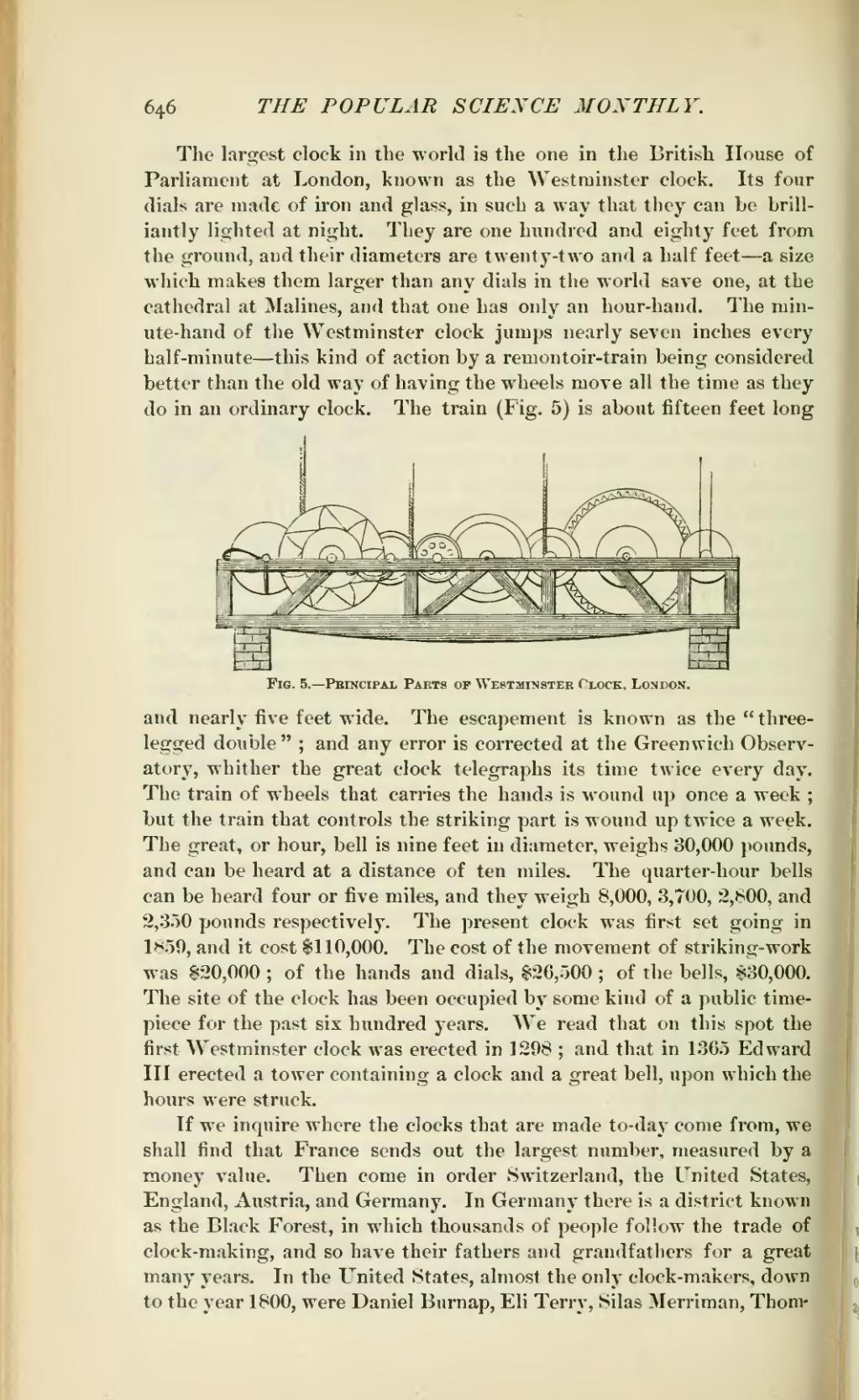The largest clock in the world is the one in the British House of Parliament at London, known as the Westminster clock. Its four dials are made of iron and glass, in such a way that they can be brilliantly lighted at night. They are one hundred and eighty feet from the ground, and their diameters are twenty-two and a half feet—a size which makes them larger than any dials in the world save one, at the cathedral at Malines, and that one has only an hour-hand. The minute-hand of the Westminster clock jumps nearly seven inches every half-minute—this kind of action by a remontoir-train being considered better than the old way of having the wheels move all the time as they do in an ordinary clock. The train (Fig. 5) is about fifteen feet long

Fig. 5.—Principal Parts of Westminster Clock, London.
and nearly five feet wide. The escapement is known as the "three-legged double"; and any error is corrected at the Greenwich Observatory, whither the great clock telegraphs its time twice every day. The train of wheels that carries the hands is wound up once a week; but the train that controls the striking part is wound up twice a week. The great, or hour, bell is nine feet in diameter, weighs 30,000 pounds, and can be heard, at a distance of ten miles. The quarter-hour bells can be heard four or five miles, and they weigh 8,000, 3,700, 2,800, and 2,350 pounds respectively. The present clock was first set going in 1859, and it cost $110,000. The cost of the movement of striking-work was 820,000; of the hands and dials, $26,500; of the bells, 830,000. The site of the clock has been occupied by some kind of a public time-piece for the past six hundred years. We read that on this spot the first Westminster clock was erected in 1298; and that in 1365 Edward III erected a tower containing a clock and a great bell, upon which the hours were struck.
If we inquire where the clocks that are made to-day come from, we shall find that France sends out the largest number, measured by a money value. Then come in order Switzerland, the United States, England, Austria, and Germany. In Germany there is a district known as the Black Forest, in which thousands of people follow the trade of clock-making, and so have their fathers and grandfathers for a great many years. In the United States, almost the only clock-makers, down to the year 1800, were Daniel Burnap, Eli Terry, Silas Merriman, Thom-
